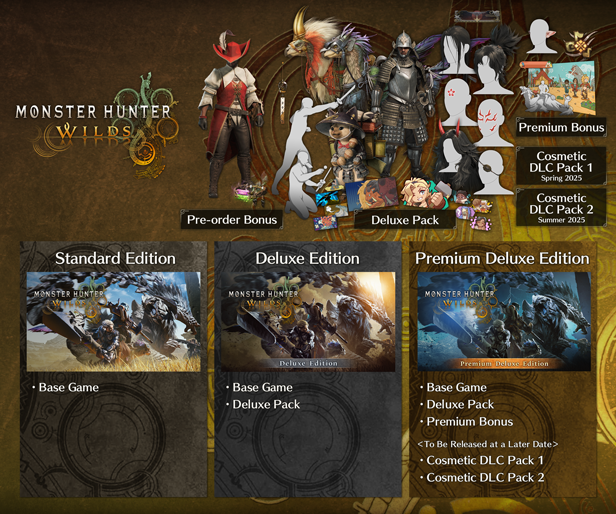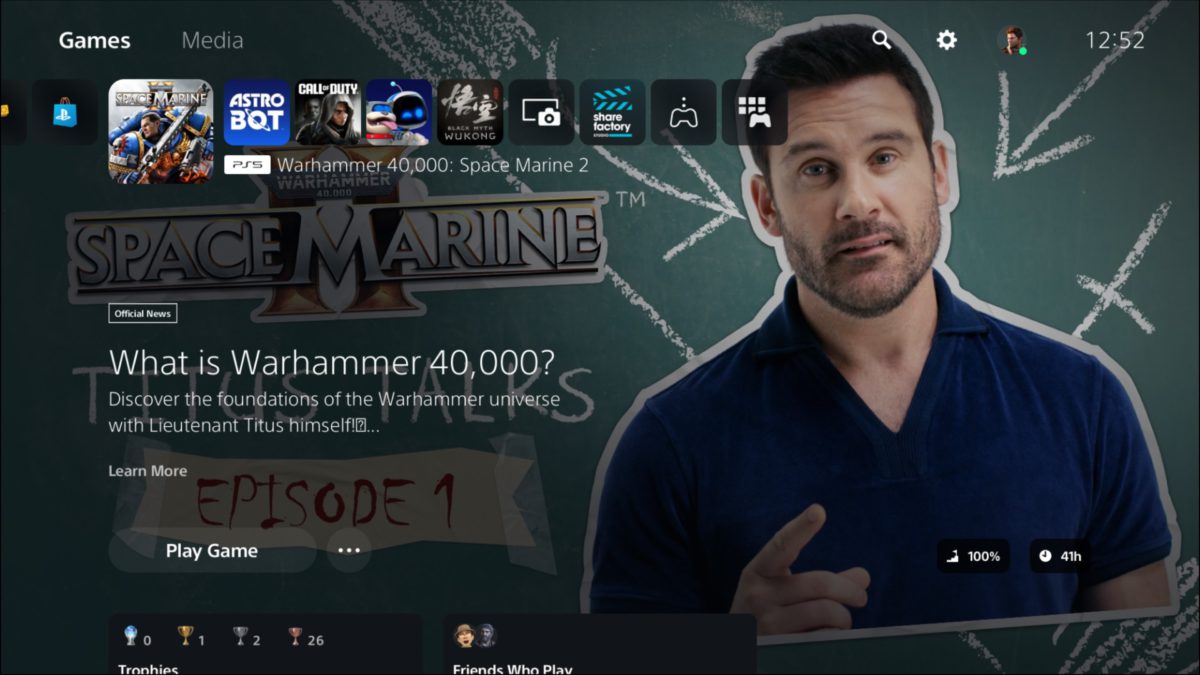The next mainline installment in the Monster Hunter series is coming soon. Monster Hunter Wilds is set to release for PS5, Xbox Series X|S, and PC on February 28. It brings a gorgeous open-world setting like Monster Hunter World and introduces some of the fast traversal of Monster Hunter Rise to create what should be the best of both worlds. Monster Hunter Wilds is now available to preorder in a variety of editions (see it at Amazon). Below, we break down what comes in each one, how much they cost, and more. Let’s dive in.
Monster Hunter Wilds (Steelbook Edition)
PS5
- Get it at Amazon – $74.99
- Get it at Best Buy – $74.99
- Get it at GameStop – $74.99
Xbox Series X|S
- Get it at Amazon – $74.99
- Get it at Best Buy – $74.99
- Get it at GameStop – $74.99
Those seeking a physical copy of Monster Hunter Wilds have two options: with a steelbook case or without. The steelbook case looks pretty rad, and it only costs $5 more than the non-steelbook edition. It’s your call.
Monster Hunter Wilds (Standard Edition)
PS5
- Get it at Amazon – $69.99
- Get it at Best Buy – $69.99
- Get it at GameStop – $69.99
- Get it at PS Store (digital) – $69.99
Xbox Series X|S
- Get it at Amazon – $69.99
- Get it at Best Buy – $69.99
- Get it at GameStop – $69.99
- Get it at Xbox Store (digital) – $69.99
PC
- Get it at Fanatical – $57.39
- Get it at Steam – $69.99
Anyone who just wants the game by itself, either in digital or physical format, can preorder it at their retailer of choice using the links above.
Monster Hunter Wilds Digital-Only Editions
Two editions of Monster Hunter Wilds are only avaialble in digital format across platforms. There’s the $89.99 deluxe edition, and the $109.99 premium deluxe edition. Read on for links and to see what each one comes with.
Monster Hunter Wilds Deluxe Edition (Digital)
- Get it for PS5 – $89.99
- Get it for Xbox – $89.99
- Get it for PC (Fanatical) – $73.79
- Get it for PC (Steam) – $89.99
The digital-only deluxe edition comes with the game itself, plus the following in-game bonuses:
Deluxe Pack
- Hunter Layered Armor Set: Feudal Soldier
- Hunter Layered Armor: Fencer’s Eyepatch, Oni Horns Wig
- Seikret Decoration: Soldier’s Caparison, General’s Caparison
- Felyne Layered Armor Set: Felyne Ashigaru
- Pendant: Avian Wind Chime
- Gesture: Battle Cry, Uchiko
- Hairstyle: Hero’s Topknot, Refined Warrior
- Makeup/Face Paint: Hunter’s Kumadori, Special Bloom
- Sticker Set: Avis Unit, Monsters of the Windward Plains
- Nameplate: Extra Frame — Russet Dawn
Monster Hunter Wilds Premium Deluxe Edition (Digital)
- Get it for PS5 – $109.99
- Get it for Xbox – $109.99
- Get it for PC (Fanatical) – $90.19
- Get it for PC (Steam) – $109.99
The digital-only premium deluxe edition comes with the game itself, all the items in the deluxe edition, plus a premium bonus and two planned DLC cosmetic packs. Here’s everything all laid out:
Deluxe Pack
- Hunter Layered Armor Set: Feudal Soldier
- Hunter Layered Armor: Fencer’s Eyepatch, Oni Horns Wig
- Seikret Decoration: Soldier’s Caparison, General’s Caparison
- Felyne Layered Armor Set: Felyne Ashigaru
- Pendant: Avian Wind Chime
- Gesture: Battle Cry, Uchiko
- Hairstyle: Hero’s Topknot, Refined Warrior
- Makeup/Face Paint: Hunter’s Kumadori, Special Bloom
- Sticker Set: Avis Unit, Monsters of the Windward Plains
- Nameplate: Extra Frame — Russet Dawn
Monster Hunter Wilds Cosmetic DLC Pack 1 (Planned for release in Spring 2025)
- Hunter layered armor: 1 series (5 pieces), and 1 piece
- Seikret decorations: 2
- Pendants: 6 (Color variation)
- Pose Sets: 1
- Makeup/Facepaint: 1
- Sticker set: 1
- BGM Set: 1
- Pop-up camp customization contents: 2
Monster Hunter Wilds Cosmetic DLC Pack 2 (Planned for release in Summer 2025)
- Hunter layered armor: 1 series (5 pieces)
- Pendants: 6 (Color variation)
- Gesture sets: 2
- Hairstyles: 2
- Makeup/Facepaint: 2
- Sticker set: 1
Premium Bonus (Planned for release when the main game releases)
- Hunter Layered Armor: Wyverian Ears
- Premium Bonus Hunter Profile Set
- BGM: Proof of a Hero (2025 Recording)
Monster Hunter Wilds Preorder Bonus
Preorder any edition of Monster Hunter Wilds, and you’ll receive the Gilded Knight set of layered armor, shown above. How about that.
What Is Monster Hunter Wilds?
Monster Hunter Wilds is the latest installment in the long-running series. Based on its graphically intensive nature, it’s more a follow-up to Monster Hunter Worlds than Rise. And as such, it won’t be available on Nintendo systems.
Once again, you play as a Hunter in a world filled with dangerous beasts. Your job is to pick a weapon type/play style and use it to hunt sizable monsters roaming the land. Then you use their various parts to create better gear that lets you go out and hunt bigger and more dangerous monsters. This time around, you have the mobility of Monster Hunter Rise, with the gorgeous beasts and environments of World, creating what just might be the best of both worlds.
PC gamers can check out the recommended specs for playing the game. Those looking for a deep dive into what’s new and what’s returning can check out our lengthy Monster Hunter Wilds hands-on preview.
Other Preorder Guides
Chris Reed is a commerce editor and deals expert for IGN. He also runs IGN’s board game and LEGO coverage. You can follow him on Threads.








